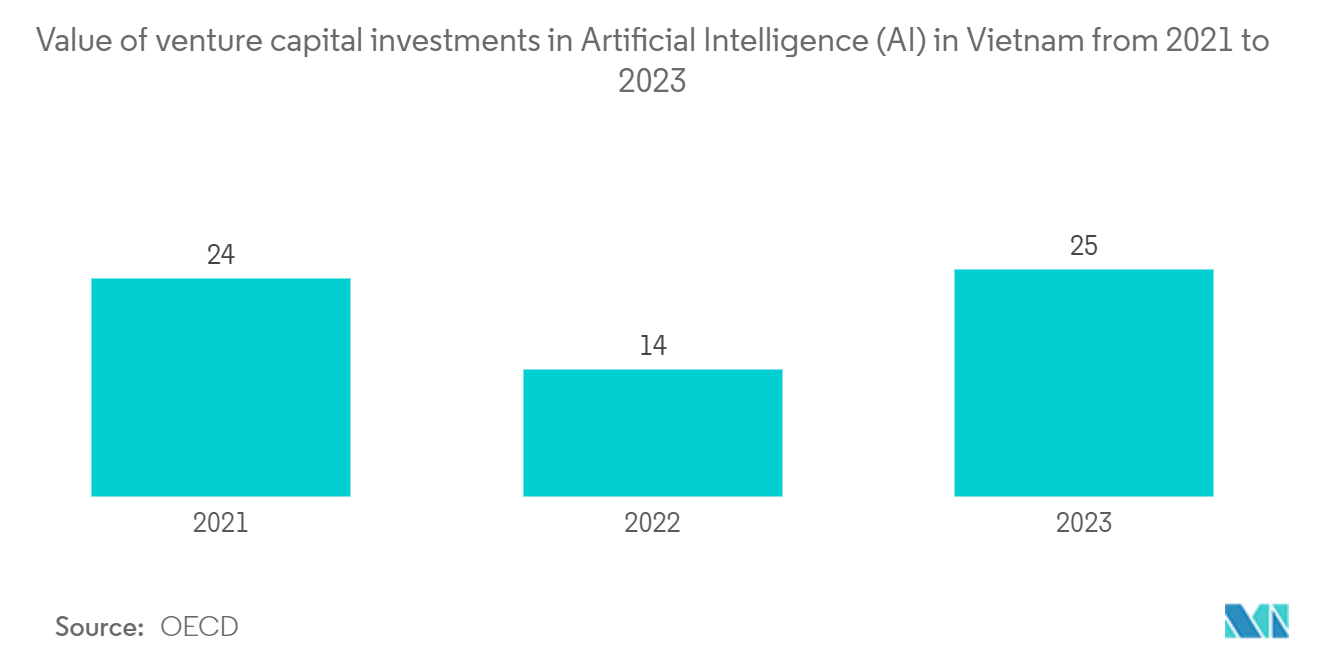Market Trends of Vietnam Data Center Cooling Industry
IT and Telecom to Hold Significant Share
- The telecommunications industry is looking toward institutionalization to supervise and promote digital transformation, making the process a foundation for developing the digital economy and society.
- The Vietnam Radio and Electronics Association suggested that 80% of Vietnamese data are created abroad. The country is taking necessary measures to produce its data locally and aims to generate revenues from the national data infrastructure, which may account for 1% of the GDP by 2025. Interconnecting data centers and providing connectivity are vital to network requirements, resulting in high storage resources and energy consumption, necessitating data center cooling.
- About 80% of the data centers in Vietnam are operated by local telecommunication companies. Major players include VNPT IDC (7 facilities, 2 of 10,000 sq. m, others under 2,000 sq. m in addition to joint-ventures in other projects of large scales from 5,000 - 6,000 sq. m), Viettel IDC (5 facilities, 1 of 10,000 sq. m, 3 of 3,000 - 6,500 sq. m, and 1 of 500 sq. m), and other players.
- Data centers exhibit energy and carbon-intensive properties due to the constant operation of cooling systems, IT equipment, power generators, and facility lighting. Carbon emissions from data centers contribute up to 3.7% of total greenhouse gas emissions, placing it ahead of aviation (2.4%), shipping (2.3%), and rice cultivation (1.5%).
- The deployment of 5G networks may boost the region's digital economy and lead to higher demand for high-bandwidth networking infrastructure, leading to major data center constructions and cooling solutions. For instance, in November 2021, Amazon Web Services (AWS) announced AWS outposts in Vietnam.
- Vietnam's data center cooling market is thriving, with both local and foreign companies looking to develop more DCs in Southeast Asian countries as demand for data storage continues to grow. A key reason is the implementation of a new data localization rule in Vietnam in 2022, which resulted in increased activity in DC investments. Efficient management of thermal loads within telecom facilities and electronic enclosures is essential, which may lead to increased demand for major cooling solutions.

Liquid Cooling to Register Significant Growth
- With the implementation of the data localization law in Vietnam, data center investments are increasing Y-o-Y. The country is witnessing investments from new entrants such as Data Center First, Edge Centres, Infracrowd Capital, and Worldwide DC Solutions. Existing operators are expanding their presence in the country by investing in new facilities and expanding existing ones.
- Regarding network connectivity, the country has five existing submarine cables connecting the countries in Asia-Pacific and Europe, Middle East and Africa (EMEA) and the United States. Asia Direct Cable (ADC) and Southeast Asia-Japan Cable 2 (SJC2) are the two upcoming submarine cables expected to be operational by 2023/2024.
- Vietnam has greenlit a National Digital Transformation Program, targeting completion by 2025 and setting sights on 2030. The initiative aims to usher in a digital shift across governance, economy, and society while also positioning Vietnamese tech firms on the global stage.
- In Asia, the demand for high-performance computing (HPC) is surging, spurred by escalating cyber threats and a push for superior technological prowess. Leading Southeast Asia in cyber threats, Vietnam has seen the establishment of the National Supercomputing Centre (NSCC), which is now harnessing cutting-edge technologies to fortify its HPC systems and networks. Consequently, as AI and HPC gain traction, Vietnam's appetite for liquid cooling solutions is poised to grow.


